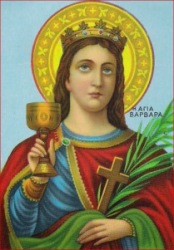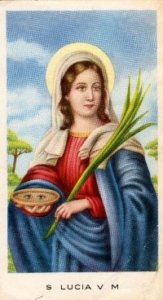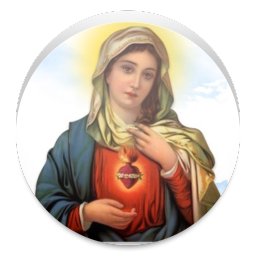“Son of man, take the brick and lay it at front; draw icons of the city of Jerusalem and surround it”
(Ezek. 4፡1)
Deacon Zekirstos Tsegaye
Holy icons are sacred rituals where the worship of God is performed. The people of Israel primitively passed on icons through the preparation of stone, wood cutting, scraping of the skin and by painting of harmonious colors. The origins of the sacred images laid its foundation at the Old Testament;
God commanded Prophet Moses to draw a Cherub on the Ark of the Covenant. “Craft one cherub on one side with the atonement and cover the other Cherub on the other side. Cherubs will spread their wings high; their wings will swathe the seal of atonement; they face looks at one another; the cherubim’s faces shall look at the cover” (Ex. 25:19-25)
The Bible has in scripted about the origin of sacred icons. “In the Most Holy Place, he made two cherubs out of olive wood, ten cubits high. One of the wings of one of the cherubs is five cubits. Their other wing was five cubits long; from one end of the wing to the other was ten cubits. Both of the cherubim were of the same size and face. The second of the cherub was as the same. And they put the cherubim in the inner house; cherub’s wings were spread. The wing of one of the cherub’s touched one of the tower; the second cherub’s wing touched the second tower; both of their wings touched one another at the middle of the house. And he weaved the cherubim with gold. He engraved images of Cherubim, the Palm tree and the bloomed flowers all around the walls of the house, inside and out.” (1 Kings 6: 23-29) At Ezekiel’s prophecy as well (Ezek. 4፡1) it’s stated “Son of man, take the brick and lay it at front; draw icons of the city of Jerusalem and surround it”
In ancient era, people taught the story of the Bible in support with icons in a cave. Beyond that by drawing icons of saints in commemoration of their combating and scarification for their faith, they kept their story through icons.After Christians kept their story for generations, around the beginning of the eighth century, dispute arose between Roman Christians and Byzantine Christians. Christians who lived at that era were divided into two extremes because of the sacred paintings (holy icons). The first are called Iconophiles. These Christians are considered the gods because they are so fond of sacred images (holy icons). The second ones are called iconoclast who said that Christians do not need holy icons at all and perceived they should be removed from the place of worship. This disagreement persisted for a long time. Later in the year 787 GC, in the second Council of Nicaea, it was decided that reverence and worship of the saints should be cherished. According to this conference, Holy icons serves as illustrations of the glory of God in the Church Holy Trinity, our LORD and Savior Jesus Christ, the Blessed Virgin Saint Mary, the Saints Angels, Prophets and Apostles Righteous and Martyrs.(Cavalcade of Religion Chapter 13)
The holy icons we use in the Holy Church are drawn by people whom God has chosen; For example, for the first time the image of the crucifixion of our Lord and Savior Jesus Christ was painted by the Evangelist Saint Johannes for King Tiberius.
Holy paintings are canonical and church-based. They have a system of depiction and practice. They are placed at Church and laities stand in front of the icon where they pray and plead. When drawing icons you must first ask God in prayer, the Prince of Holiness. He is the possessor of knowledge and wisdom, so that we may have grace to draw his icons. The use of colors for the Holy paintings is also the implications by the church, but not by random. For example, red color painting is a symbol of martyrdom and striving for the saints, the righteous and the martyrs. Thus, the red color can often be observed in the martyrs. White colored is character of purity. It can be seen in the icon of the resurrection and ascension of our Lord Jesus Christ and Saint Virgin Mary.
The blue color represents the eternal divinity and God and so we can observe at it in the icon of Holy Trinity. The size of the sculpture of the portrait may be as large or as small as the Holy books and the buildings of Church. There are things to keep in mind when using Holy Icons for prayer and various services. It is important to keep it in a proper place so that it does not get damaged and blurred. The owner of the icon describes the picture, illustrating God or Holy, Righteous or Martyr due reverence and worship shall be given. Artists to help the laities know and worship the rightful owners of the painting they must also draw the icon they are painting. However, in some places of worship this is not being practiced. Two or three types of paintings are depicted as the holy painting. An example of this is the Holy Arsema icon. There are three types of paintings in her name. This is also a topic of discussion among believers and then there were sources that disputed whether it was not her icon portrait and finally all of us came to the conclusion that the picture we received as Saint Arsema was Saint Barbara.



In sister Oriental Eastern Orthodox and in the church system, extravagant paintings are widely available like Catholics in Western Europe.For example, there are images that are widely observed outside the Orthodox Church. As evidence for this, is a portrait of our Lord and God, Jesus Christ, with two finger paintings for sale. According to the Eastern Orthodox Church system, one finger paintings from one body, from two one behavior. We are using it because it denotes the unifying nature of one of two qualities. (‘Mystery of Incarnation’) Being aware of the true icon can be a precaution that can affect the ritual. We need to be careful not to use pictures that do not represent the church. Thus, as we can solve it by clarifying the first pictures we inherited in history; we should use it by asking priests and scholars.
Source:-Amharic text by Bizuayehu Jembere at www.mahiberekidusan.com/amharic website/
